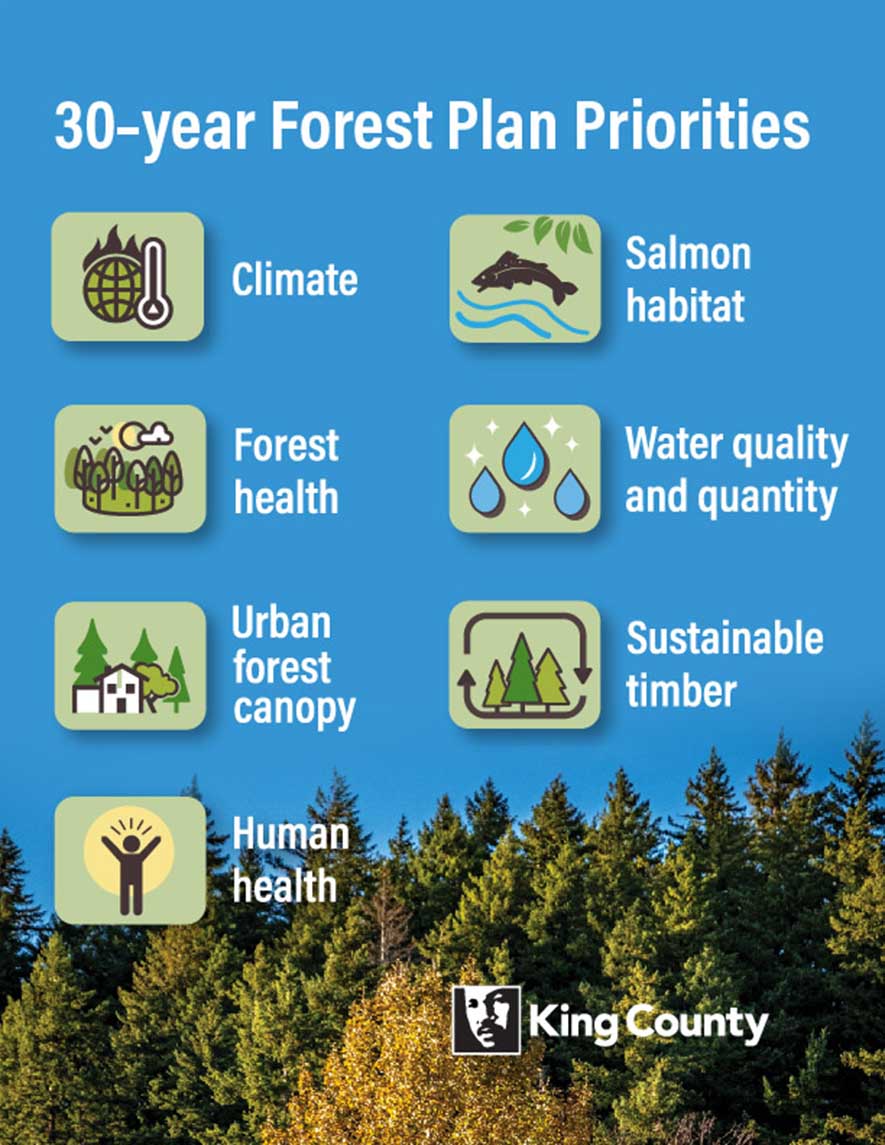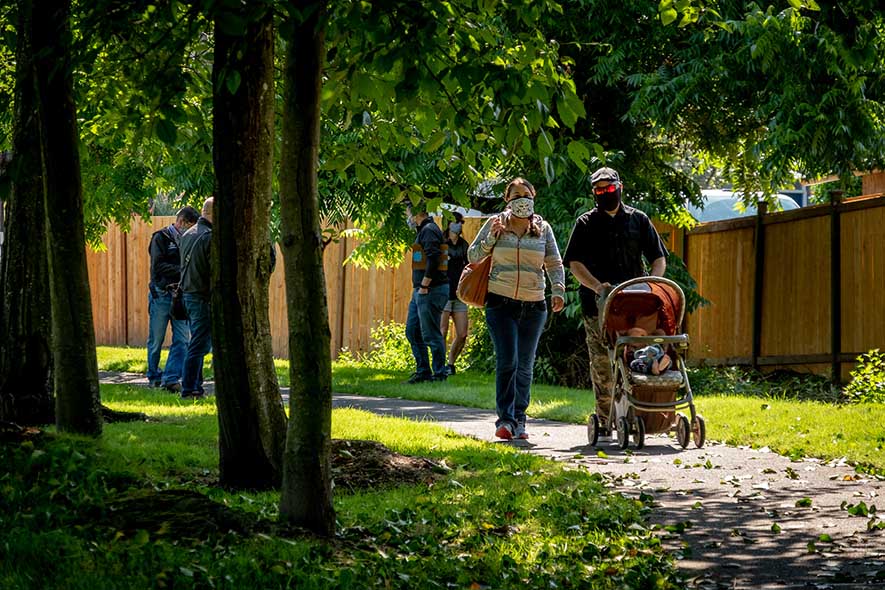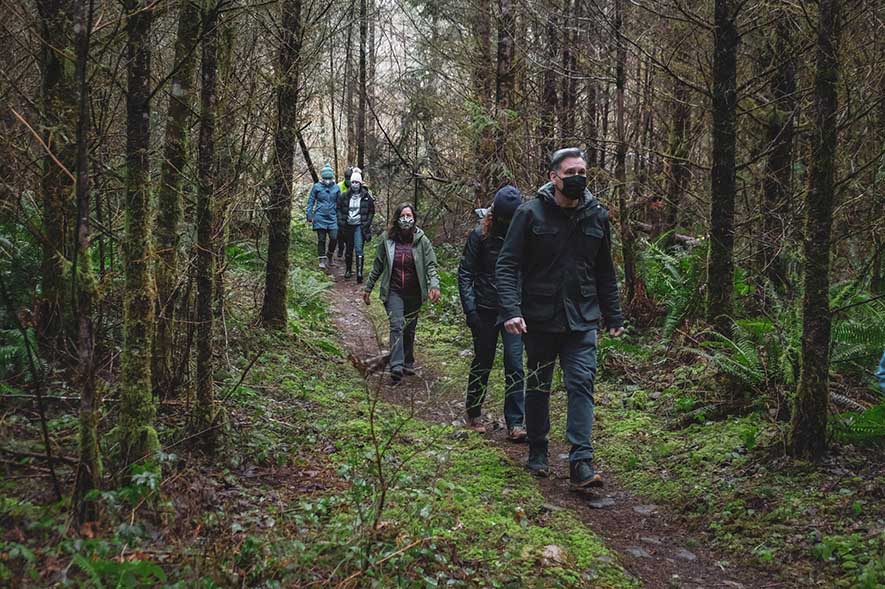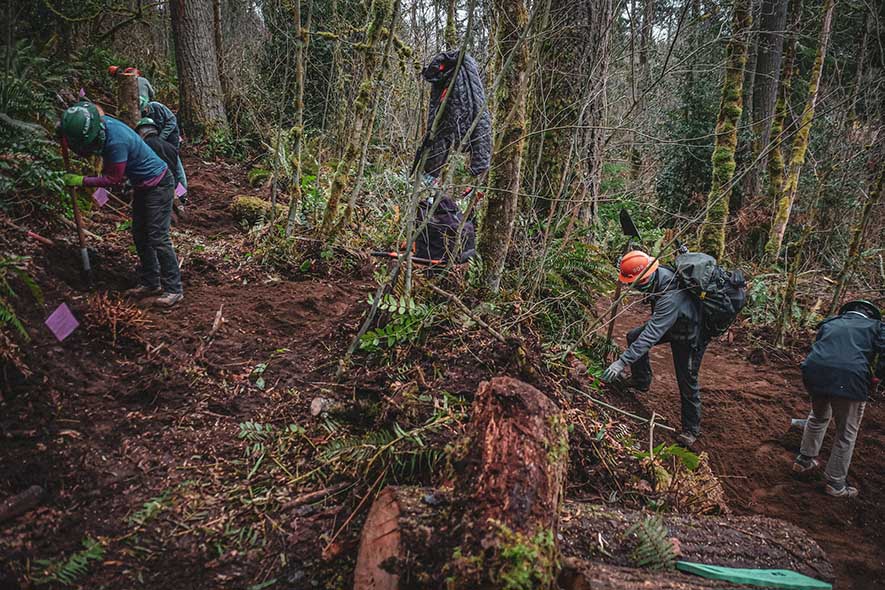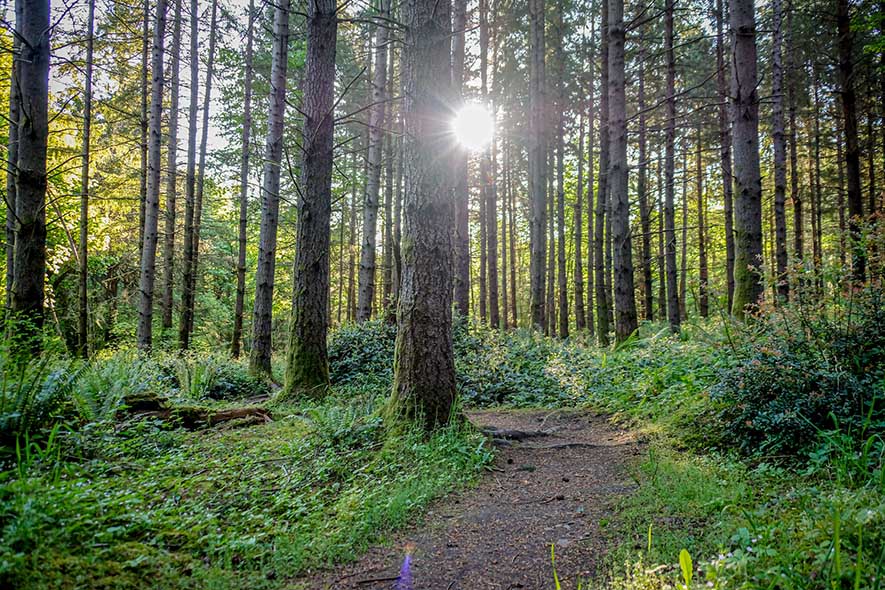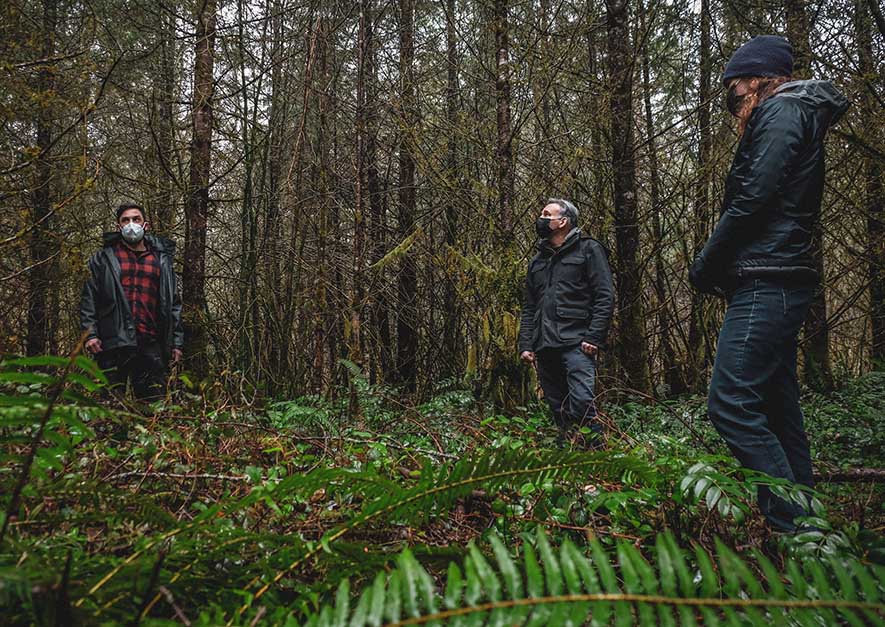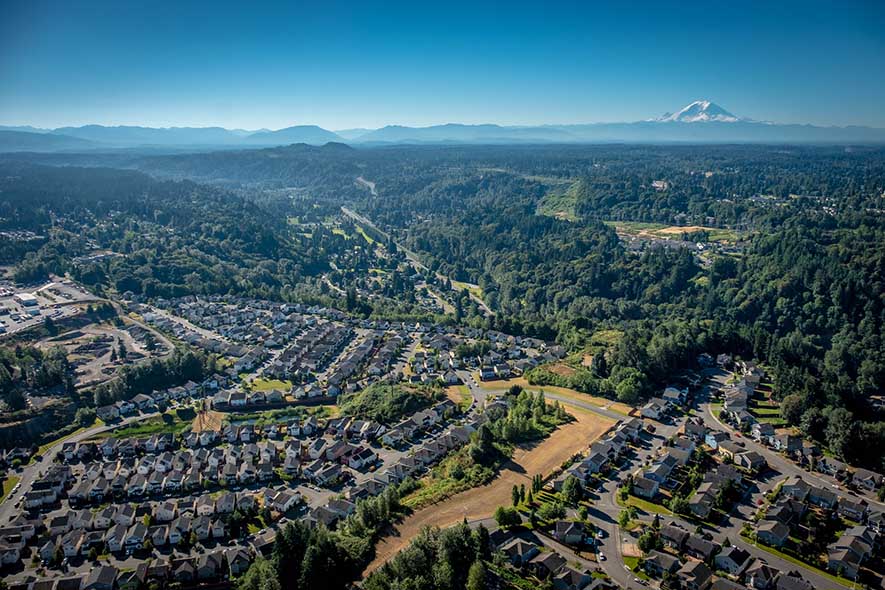Our generation’s commitment to healthy, resilient forests: Executive Constantine announces 30-Year Forest Plan
Summary
Executive Dow Constantine announced a comprehensive plan to help ensure that King County forests continue to provide multiple benefits – storing carbon, improving salmon habitat, lowering temperatures in urban areas, and more – for generations to come.
Story
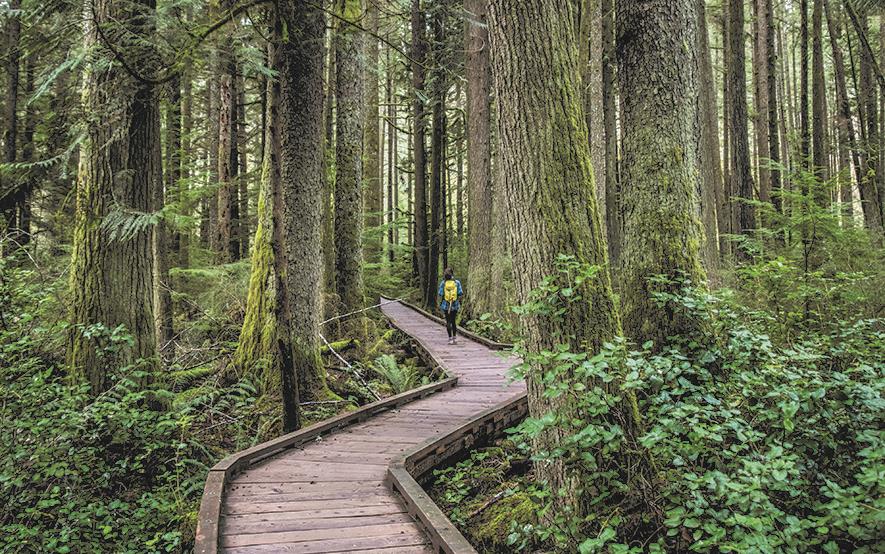
King County Executive Dow Constantine today unveiled the 30-Year Forest Plan, outlining a shared vision for increasing forest canopy, improving forest health, confronting climate change, and achieving clean water and healthy habitat.
The comprehensive plan – developed with input from a broad coalition of partners – is designed to ensure that King County’s forests continue to provide multiple benefits, such as storing carbon, improving salmon habitat, providing timber, lowering temperatures in urban areas, improving water quality, regulating water quantity, offering recreational opportunities, and, supporting cultural values.
“The spectacular forests of King County have defined our landscape since time immemorial, contributing to the clean air and water, healthy habitat, and recreational opportunities that we enjoy today,” said Executive Constantine. “The 30-Year Forest Plan is our generation’s commitment to ensuring that all those who come after us experience those same benefits while honoring tribal rights and making access to forestland more equitable.”
King County staff experts developed the plan with input from Tribes, nonprofits, cities, forestland owners and managers, and community members who identified seven priority areas that will guide the county’s work with partners for the next generation:
- Climate: Contribute to climate change mitigation by increasing carbon sequestration and storage in King County forest and increase resilience and preparedness for climate impacts on forests
- Forest Health: Improve and restore forest health, including increasing resilience to disease, invasive species, drought and climate change; sustaining biodiversity, improving wildlife habitat, and restoring connectivity; and maintaining or improving ecological functions
- Urban Forest Canopy: Increase tree canopy in urban areas with a focus on areas with the lowest canopy cover, and maintain and improve the health of existing urban forests
- Human Health: Prioritize tree canopy improvements and increased access to forested spaces to improve human health outcomes and advance health equity
- Salmon Habitat: Increase and improve forest cover and condition in areas where it can enhance salmon habitat
- Water Quality and Quantity: Maintain and expand forest canopy where it provides the most benefit for improving water quality and quantity, reducing stormwater runoff, and reducing flooding
- Sustainable Timber: Support an ecologically sustainable and economically viable timber industry that promotes maintenance of ecological functions in working forests and local economic development
The plan provides clear direction for the King County Department of Natural Resources and Parks to guide its forestry work by focusing on shared priorities and goals, better strategizing tree planting, forest restoration, and forest protection, and better aligning the county’s work with partners to achieve the most benefits.
Many forests in King County were clear-cut and abandoned or replanted to a single tree species and the resulting forest does not resemble well-functioning forest ecosystems that provide a range of services, creating a need for forest health treatments. These degraded forests have increased vulnerability to forest health problems.
- The Climate section identifies actions that King County and partners can take to increase the amount of carbon stored in forests and making forests and newly planted trees more resilient to the effects of climate change. It also recommends actions that will better prepare communities located near forests for the risk of forest fires.
- The Forest Health section of the plan provides direction for how to increase resilience of forests and connectivity of protected forestland to improve wildlife habitat. It also will promote a broader public understanding of pre-settlement forest stewardship by the Coast Salish peoples and the resulting forest conditions, which can help inform current management towards healthy, complex, and biodiverse forests.
- The Human Health section shows how King County and partners can prioritize additional tree canopy in communities that are subject to increasingly hot summer temperatures and air pollutants, better serving BIPOC communities where the needs are greatest.
- The Salmon Habitat section focuses on protecting and restoring both riparian and upland forests that provide important habitat for salmon and aligns the county’s salmon habitat restoration work with Tribal priorities, using culturally important plant species when restoring vegetation.
Contributing to climate solutions, clean water, healthy habitat
The development of the Forest Plan began with a commitment in the 2015 Strategic Climate Action Plan to plant one million trees, a goal that King County and its partners surpassed.
The 30-Year Forest Plan will guide efforts to maintain and enhance the county’s forest cover from 2020 to 2050, that starts with a set of clear goals and lays out strategies and actions to meet those goals. The strategies include planting more trees, but the plan provides guidance about how and where to plant trees to meet multiple goals.
It includes forest protection goals, but also incorporates the need for work to improve forest condition, including increasing species diversity and removing invasive species, so that forests can provide a wider range of benefits. guiding a strategic approach that considers not just how many trees are planted but rather what actions will contribute to healthy, resilient forests.
Relevant links
- King County 30-Year Forest Plan
- PHOTO GALLERY: Executive Constantine field tour of 30-Year Forest Plan
- Land Conservation Initiative
- 2020 Strategic Climate Action Plan
Quotes
The spectacular forests of King County have defined our landscape since time immemorial, contributing to the clean air and water, healthy habitat, and recreational opportunities that we enjoy today. The 30-Year Forest Plan is our generation’s commitment to ensuring that all those who come after us experience those same benefits while honoring tribal rights and making access to forestland more equitable.
Congratulations to King County for the 30-Year Forest Plan, which represents a collaborative approach and an extraordinary commitment to the ecological health of our forests, everywhere from forested mountainsides to city parks and street trees. Thanks to King County’s leadership, this vision for the future will provide climate benefits through greater carbon storage, cleaner air and water, healthier wildlife habitat, reduced runoff, and increased tree cover to benefit waterways and communities.
With climate change, population growth and commercial development putting increasing pressure on our forests, we are encouraged that King County is taking a responsible and holistic approach to balancing forest and human health,” said Forterra president and CEO Michelle Connor.
For more information, contact:
Chad Lewis, Department of Natural Resources and Parks, 206-263-1250

 Translate
Translate
